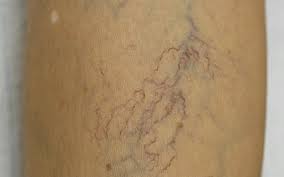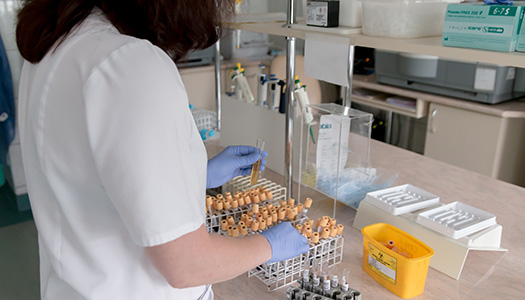Varicose veins:
Varicose veins are twisted, enlarges veins near the surface of the skin. They are most common in the legs and ankles. They usually aren’t serious, but they can sometimes lead to other problems.
Symptoms:
Varicose veins look dark blue, swollen, and twisted under the skin. Some people do not have any symptoms. Mild symptoms may include:
- Heaviness, burning, aching, tiredness, or pain in your legs. Symptoms may be worse after you stand or sit for long periods of time.
- Swelling in your feet and ankles.
- Itching over the vein.
More serious symptoms include:
- Leg swelling.
- Swelling and calf pain after you sit or stand for long periods of time.
Skin changes, such as:
- Colour changes.
- Dry, thinned skin.
- Inflammation.
- Scaling.
- Open sores or you may bleed after a minor injury.
Varicose veins are common and usually aren’t a sign of a serious problem. But in some cases, varicose veins can be a sign of a blockage in the deeper veins called deep vein thrombosis.
Causes:
The exact reasons why you may develop varicose veins aren’t fully understood at present. However, it’s thought that if you have varicose veins, then your vein walls are weak. This causes the valves in your veins to expand and separate, which damages them. Blood can’t travel up your veins as well or as easily as it should, and is more likely to pool.
You’re more likely to develop varicose veins:
- as you get older (because your veins lose their elasticity with age)
- if you’re pregnant (because of the increased pressure on your veins)
- if you’re very overweight (also because of the increased pressure on your veins)
- if other members of your family have them
- if you stand for long periods of time, for example you stand all day at work
Preventions:
- Protect your skin from the sun by avoiding exposure or wearing sunscreen when outside.
- Exercise on a regular basis – many doctors recommend at least 30 minutes a day – to improve the strength of your veins and leg muscles.
- Do not cross your legs!
- Avoid wearing clothing that restricts circulation.
- Control your weight; do not engage in “roller coaster” weight loss and weight gain periods.
- Try not to stand for long periods of time. If that’s unavoidable – if you have a job as a saleswoman, for example – remember to continually shift your weight from one leg to the other.
- Eat enough fiber. Did you know that constipation can contribute to varicose veins?
- Wear elastic support stockings.
Homoeopathic Remedies:
Some of the homoeopathic remedies that can play wonders are as follows:
- Arnica Montana : For sore bruised pain in legs as if beaten up. Over sensitiveness of pain. On lying down and sitting, the patient feels hard. Especially for varicosity developed after mechanical injuries, even if received years ago.
- Hammemelis : The principle action of this drug is on the veins especially on rectum, genitals and limbs. It helps for soreness of blood vessels. Congestive, painful, sore swollen and inflamed veins which are hard and knotty.
- Vipera : Fullness and unbearable pain as if the limbs will burst. Cannot sit with limbs hanging down. Especially for the veins which has developed bleeding tendency.
- Pulsatilla : A remedy for female who are mild, gentle, cry while talking. Thirstlessness, chilliness with shifting pains, burning and stitching pains. Blueness of the veins with heavy legs.
- Floric acid: Especially for patients where there is slow destruction of the walls of the blood vessels causing varicose veins and ulceration. Patient always feel hot and wants to bathe in cold water
- Carbo veg: Its acts on venous circulation especially capillaries where there stagnancy, where the limbs turn blue and cold. The patients are fat ,sluggish lazy and has chronic complaints.







